The 1970s were a golden age of television sitcoms, producing shows that shaped American culture and continue to influence entertainment today. While programs like “The Mary Tyler Moore Show,” “MAS*H,” and “All in the Family” have secured their places in the pantheon of classic television, many others that once commanded massive audiences have faded from collective memory. These forgotten gems drew tens of millions of viewers each week in their heyday—ratings that modern TV executives can only dream about—yet have virtually vanished from today’s pop culture landscape. Let’s revisit these once-dominant sitcoms that time has mysteriously left behind.
1. “Chico and the Man”

For four seasons beginning in 1974, “Chico and the Man” was a ratings powerhouse, centered on the relationship between cranky garage owner Ed Brown (Jack Albertson) and optimistic young mechanic Chico Rodriguez (Freddie Prinze). The show tackled issues of generational differences and ethnic tensions in a changing Los Angeles neighborhood, drawing huge audiences and making 22-year-old Prinze one of television’s biggest stars. NBC even continued the show for a season after Prinze’s tragic suicide in 1977, introducing a new character to replace Chico. A Shroud of Thoughts reflects fondly on the show’s legacy for its 50th anniversary in 2024.
Despite its massive popularity—it ranked in the top ten during its first two seasons—the show has largely disappeared from syndication and streaming services. Prinze’s untimely death cast a shadow over the series that made it difficult to market in reruns, while its handling of ethnic stereotypes and depiction of cultural tension feels dated to modern audiences. The show’s catchphrase “Looking good!” was everywhere in the mid-’70s but would draw blank stares from most people under 50 today, and Freddie Prinze Jr.’s career has eclipsed awareness of his father’s brief but significant cultural impact.
2. “Laverne & Shirley”

It may seem odd to include “Laverne & Shirley” on this list—after all, it was the most-watched television program in America for the 1977-78 and 1978-79 seasons and ran for eight successful years. This “Happy Days” spinoff following the adventures of blue-collar roommates Laverne DeFazio (Penny Marshall) and Shirley Feeney (Cindy Williams) in late-1950s Milwaukee dominated Tuesday nights and made its stars household names. The show’s opening sequence with the roommates skipping down the street chanting “schlemiel, schlimazel” was once one of the most recognizable bits in television. According to MeTV, the series even earned some comparisons with a groundbreaking, formative sitcom.
Despite its massive success, the show has gradually faded from popular consciousness in ways that contemporaries like “Happy Days” haven’t. The series suffered from behind-the-scenes tensions, major cast changes (including Williams leaving in the eighth season), and a much-criticized move from Milwaukee to California in later seasons. Unlike many other hit sitcoms of its era, it hasn’t found a strong streaming presence or connected with younger generations. While not entirely forgotten, its cultural footprint today is surprisingly small compared to its once-dominant ratings position.
3. “Alice”

For nine seasons starting in 1976, viewers tuned in faithfully to watch the adventures of Alice Hyatt (Linda Lavin), a widow raising her son while working as a waitress at Mel’s Diner in Phoenix. The show regularly ranked in the Nielsen top 20 and made Vic Tayback’s gruff diner owner Mel Sharples and Polly Holliday’s sassy waitress Flo (with her catchphrase “Kiss my grits!”) into cultural icons of the era. The show addressed serious issues like single motherhood and workplace harassment while maintaining a warm, funny tone. Yahoo turns back the clock to follow the careers of the show’s cast after the series ended.
Despite running nearly a decade and completing 202 episodes, “Alice” has virtually disappeared from the television landscape. The show rarely appears in syndication packages, has limited streaming availability, and seldom gets mentioned in discussions of classic TV. The working-class setting and storylines that once made it relatable now make it feel dated to programmers and audiences alike. Even the spinoff “Flo” (1980-81) starring Holliday’s popular character has been almost completely forgotten despite solid initial ratings.
4. “One Day at a Time”

Norman Lear’s groundbreaking sitcom about divorced mother Ann Romano (Bonnie Franklin) raising two teenage daughters (Valerie Bertinelli and Mackenzie Phillips) in Indianapolis tackled serious social issues while delivering reliable laughs for nine seasons. The show was consistently popular, ranking in the top 20 for much of its run and making stars of its young actresses while providing memorable moments for Pat Harrington Jr. as building superintendent Schneider. It was one of the first shows to realistically depict a single mother dating, working, and dealing with rebellious teenagers.
While the show has enjoyed a recent resurgence of interest thanks to Netflix’s Latino-focused remake, the original series itself has largely faded from pop culture references. Despite its long run and progressive themes, it doesn’t enjoy the same retrospective acclaim or nostalgia factor as Lear’s other ’70s hits like “All in the Family” or “The Jeffersons.” The show’s serious tackles of issues like teen pregnancy, drug use, and feminism make it less escapist than many sitcoms from the era, perhaps contributing to its relative obscurity today.
5. “Welcome Back, Kotter”
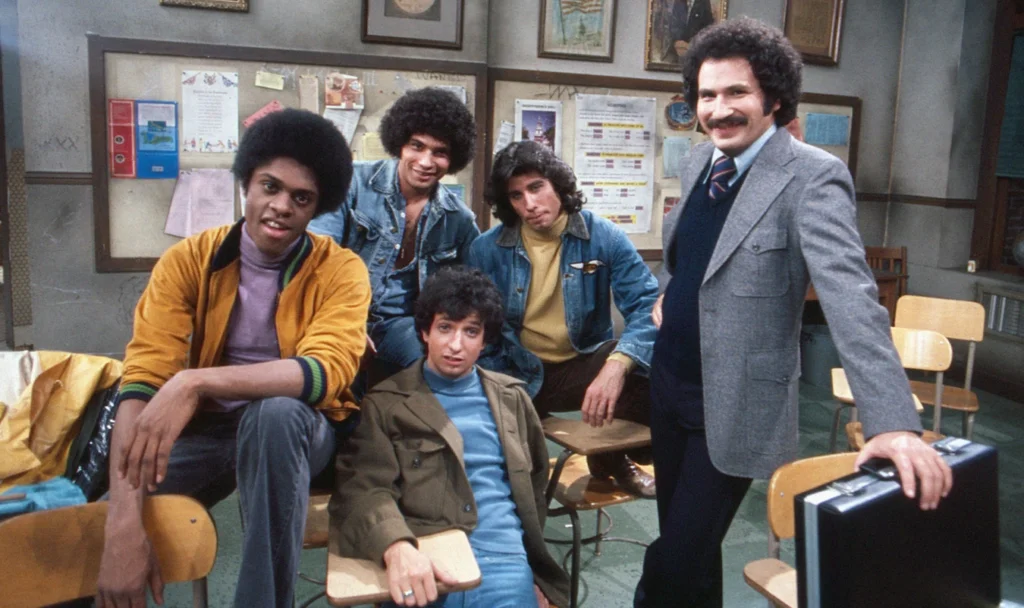
Few shows defined the late 1970s like “Welcome Back, Kotter,” which followed teacher Gabe Kotter (Gabe Kaplan) returning to his alma mater to teach a group of remedial students known as the “Sweathogs.” The show launched John Travolta to stardom as Vinnie Barbarino and introduced catchphrases like “Up your nose with a rubber hose” into playground vernacular across America. Its theme song by John Sebastian reached #1 on the Billboard charts, and the show’s merchandising was everywhere, from lunch boxes to board games.
Despite its massive cultural impact during its 1975-1979 run, the show has significantly faded from public consciousness. Its dated ethnic humor, stereotypical characters, and very specific 1970s Brooklyn setting haven’t aged particularly well. Travolta’s subsequent movie career overshadowed his television origins, while the rest of the cast never matched their “Kotter” success. Even with 95 episodes produced, the show doesn’t maintain a regular presence in syndication or streaming services, making it increasingly unfamiliar to viewers born after its heyday.
6. “WKRP in Cincinnati”

Critical darling “WKRP in Cincinnati” followed the staff of a struggling radio station that switched from easy listening to rock format. The ensemble cast created memorable characters including Gordon Jump as bumbling station manager Arthur Carlson, Howard Hesseman as burnout DJ Dr. Johnny Fever, and Loni Anderson as intelligent blonde bombshell receptionist Jennifer Marlowe. The show’s Thanksgiving episode featuring the infamous “turkey drop” is considered one of the funniest half-hours in television history.
Despite critical acclaim and a loyal fanbase during its 1978-1982 run, “WKRP” has struggled to maintain its place in pop culture, largely due to music licensing issues. The show featured popular rock songs that made syndication packages prohibitively expensive, leading to episodes being edited or music being replaced, significantly affecting the show’s quality and appeal in reruns. These music rights issues also delayed DVD releases and streaming availability, keeping the show from finding new audiences. While it maintains a dedicated cult following, its broader cultural footprint has diminished substantially over time.
7. “The Tony Randall Show”
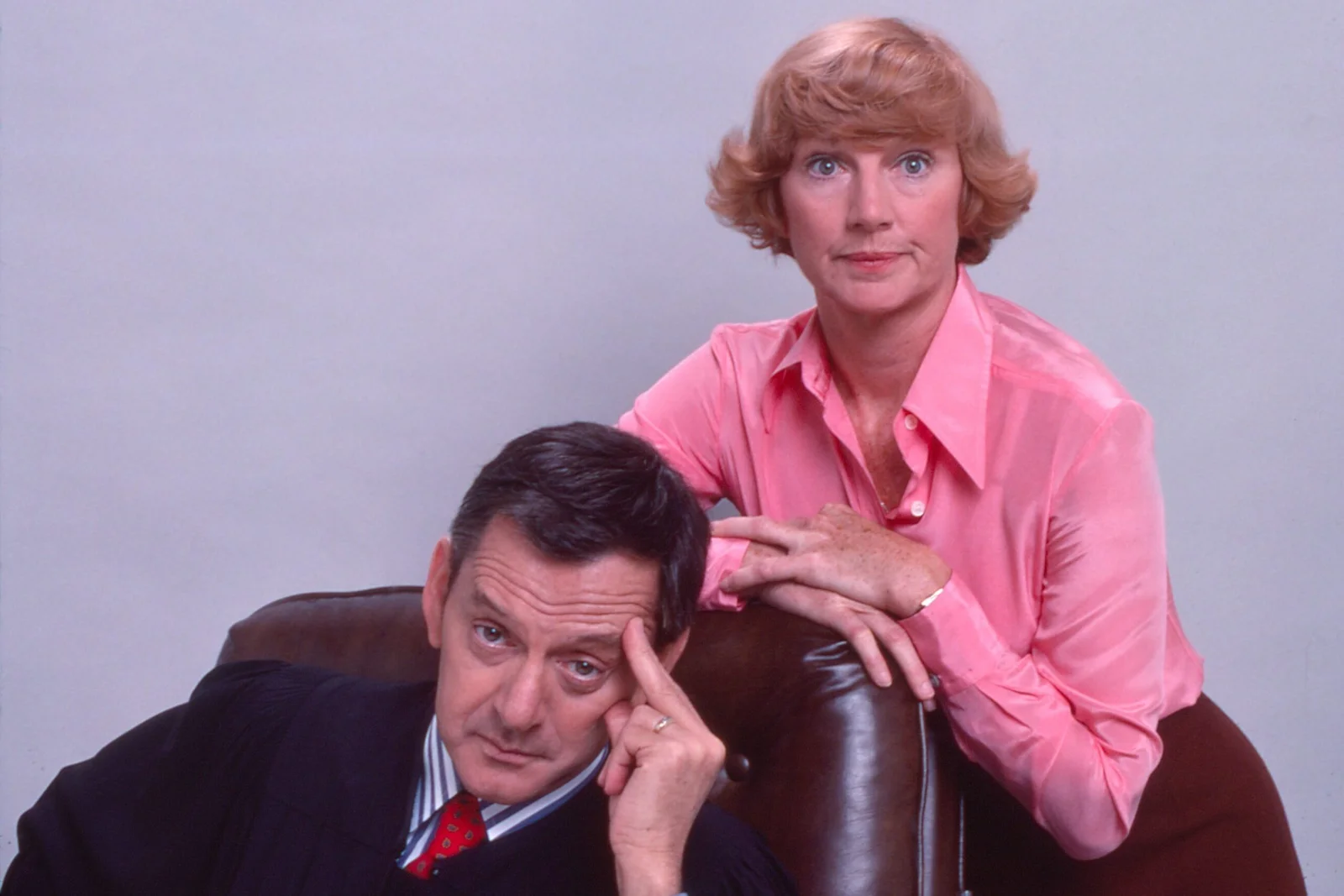
For two seasons starting in 1976, television veteran Tony Randall headlined this MTM-produced sitcom about a widowed Philadelphia judge raising two teenagers. The show was a critical favorite and initially drew strong ratings on ABC before moving to CBS for its second season. With the prestigious MTM production team (known for “The Mary Tyler Moore Show”) and Randall’s star power from “The Odd Couple,” the series seemed positioned for long-term success.
Despite its pedigree and initial popularity, “The Tony Randall Show” has been almost completely forgotten. Few people under 60 would recognize references to Judge Walter Franklin or recall the show at all. Its short run of just 44 episodes made it difficult to package for syndication, and Randall’s later work on “Love, Sidney” and numerous “Odd Couple” reunions overshadowed this series in public memory. The show rarely appears in discussions of classic MTM productions or ’70s sitcoms, making it one of the most completely vanished hit shows of its era.
8. “Three’s Company”
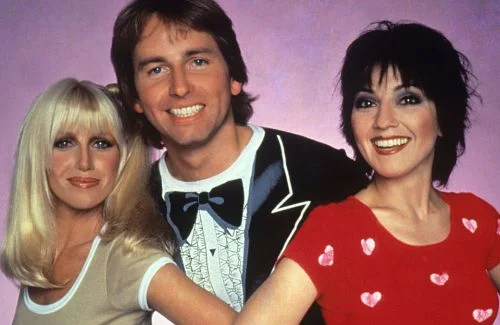
It might seem surprising to include “Three’s Company” on this list—after all, the show ran for eight successful seasons from 1977 to 1984 and was often the highest-rated comedy on television. The sitcom about Jack Tripper (John Ritter) pretending to be gay in order to share an apartment with two female roommates generated enormous ratings and controversy for its sexual innuendo and physical comedy. Ritter’s pratfalls and misunderstandings made him one of the biggest television stars of the era.
While not completely forgotten, “Three’s Company” has seen its cultural relevance diminish substantially compared to contemporaries with similar ratings. The show’s premise—shocking for its time—now seems dated and problematic in its portrayal of gay stereotypes and gender dynamics. Despite running longer and rating higher than shows like “The Bob Newhart Show” or “Taxi,” it receives far less critical respect or nostalgic reverence. The series continues in syndication but has failed to connect with younger generations the way many other ’70s hits have managed to do.
9. “What’s Happening!!”

Based on the film “Cooley High,” this sitcom about three African American teenage friends—Roger “Raj” Thomas (Ernest Thomas), Dwayne Nelson (Haywood Nelson), and Freddie “Rerun” Stubbs (Fred Berry)—navigating life in Watts, Los Angeles was a significant ratings success during its 1976-1979 run. The show was notable for depicting middle-class Black teenagers and their families without focusing exclusively on racial issues, though it didn’t shy away from relevant social topics.
Despite its popularity and groundbreaking nature, “What’s Happening!!” doesn’t receive the retrospective attention given to other Black sitcoms of the era like “Good Times” or “The Jeffersons.” The show produced a sequel series, “What’s Happening Now!!” in 1985, but both the original and follow-up have faded from cultural memory. Fred Berry’s physicality as Rerun (particularly his dancing) made him briefly iconic, but the show’s legacy has diminished over time. While occasionally appearing in syndication, it hasn’t maintained the cultural relevance its ratings success might have predicted.
10. “Soap”
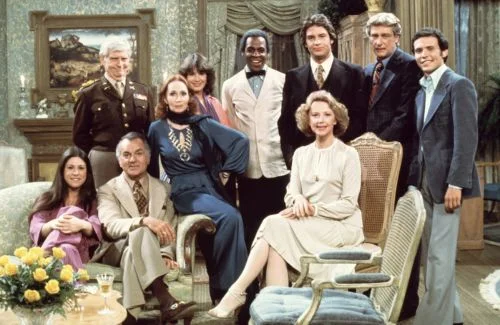
When “Soap” premiered in 1977, it generated enormous controversy for its adult content and parody of daytime soap operas, with conservative groups organizing boycotts before it even aired. The show followed the interconnected lives of the wealthy Tate family and the working-class Campbells, featuring storylines about adultery, impotence, homosexuality, religious cults, alien abduction, and murder. Despite (or perhaps because of) the controversy, the show was a ratings hit and critical favorite during its four-season run.
Despite its innovation and the launch of Billy Crystal’s career as Jodie Dallas, television’s first openly gay recurring character, “Soap” has gradually disappeared from the cultural conversation. Its serialized storytelling—revolutionary for sitcoms of its era—makes it difficult to watch in random syndicated episodes, while its handling of controversial topics sometimes feels dated to modern viewers. The show’s cancellation in 1981 without resolving its many cliffhangers further diminished its legacy, as viewers were left without closure to storylines they had followed for years.
11. “Mork & Mindy”
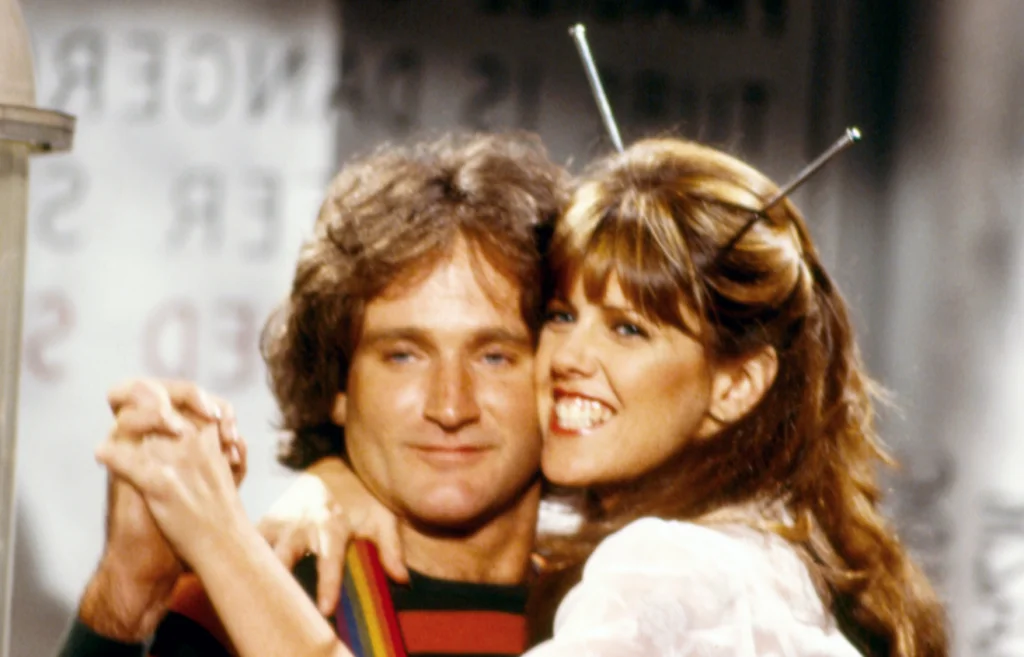
In 1978, an alien from the planet Ork landed in Boulder, Colorado and turned television upside down. “Mork & Mindy,” starring then-unknown Robin Williams as the manic alien Mork and Pam Dawber as his human roommate Mindy, became an instant phenomenon, ranking #3 in the Nielsen ratings in its first season. Williams’ improvisational comedy and catchphrases like “Na-nu, na-nu” and “Shazbot” entered the national vocabulary, while Mork’s rainbow suspenders became a fashion trend.
Despite its massive initial success, the show’s legacy has been largely overshadowed by Williams’ subsequent film career. After network tampering with the formula led to ratings declines, the show limped to cancellation after four seasons, with bizarre late additions including Jonathan Winters as Mork and Mindy’s child (born as an adult due to Orkian biology). While Williams’ tragic death in 2014 led to brief renewed interest, the show’s outlandish premises and very ’70s sensibility have prevented it from maintaining the cultural relevance of contemporaries like “Happy Days” (from which Mork originated).
12. “CPO Sharkey”
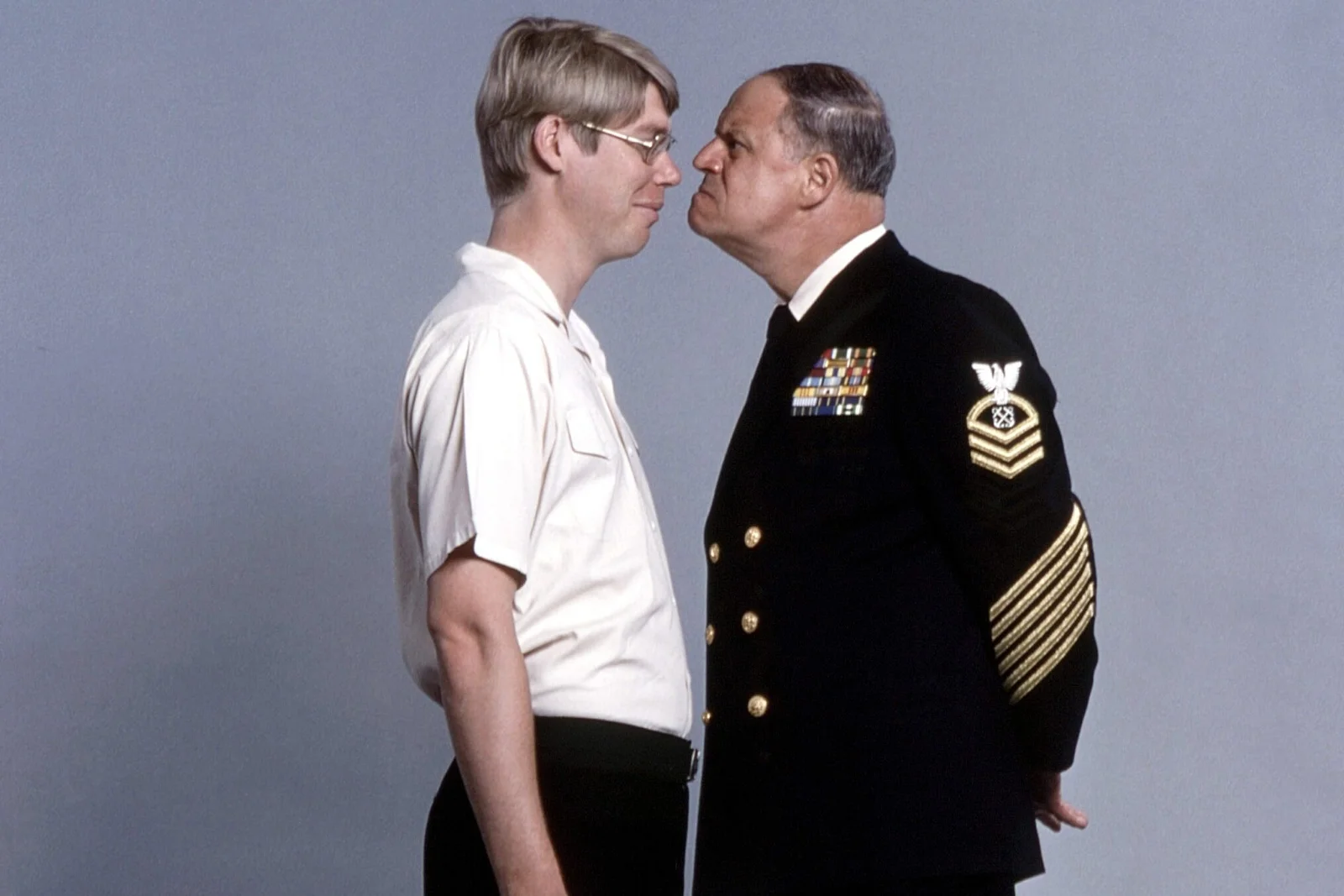
Stand-up comedy legend Don Rickles found sitcom success with “CPO Sharkey,” playing a gruff but ultimately caring Navy Chief Petty Officer in charge of a diverse group of recruits. Running from 1976 to 1978 on NBC, the show gave Rickles the perfect vehicle for his insult comedy, allowing him to hurl abuse at his charges while the plot inevitably revealed his hidden heart of gold. The show consistently won its time slot and made Rickles, already a star from his stand-up and Tonight Show appearances, into a successful sitcom lead.
Despite its ratings success, “CPO Sharkey” has virtually disappeared from cultural memory. The show rarely appeared in syndication after its cancellation, and younger audiences know Rickles primarily from his later career as a talk show guest and voice of Mr. Potato Head in the “Toy Story” franchise. The military setting and Rickles’ equal-opportunity insult comedy targeting various ethnic stereotypes hasn’t aged well for modern sensibilities. Even during the height of 1970s nostalgia, “CPO Sharkey” remained curiously absent from the conversation, making it perhaps the most completely forgotten ratings hit of the decade.
The disappearance of these once-massive hits from our cultural memory speaks to how television preservation and canonization work. Shows that tackled controversial issues in ways that now seem dated, relied heavily on catchphrases and trends of their era, or suffered from production issues affecting their afterlife in syndication have struggled to maintain relevance. Meanwhile, other shows with similar or even lower initial ratings have secured their places in the pantheon of classic television. As streaming services continue to mine the past for content, some of these forgotten gems may yet find new audiences—or they may remain curios of a broadcast era when shows could be watched by 30 million people weekly and still somehow fade completely from our collective memory.


